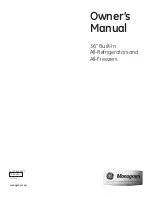
Introduction
OPERATION MANUAL
Chapter 1
RotaCool®
V2.3.0en/04.08.21//1.30
20
1.6.1
Consequence of inadequate energy dissipation
Room air/cooling water
Consequences of, for instance, contamination of the liquefier fins, inadequate clearance between
temperature control unit to wall/bath wall, room air/cooling water too warm, cooling water differ-
ential pressure too low, suction strainer contamination: The refrigerant in the coolant circuit can no
longer fully discharge the admitted energy to the room air/cooling water. Thus there is not sufficient
liquefied refrigerant available, the condensation temperature and the energy consumption to rise.
Coolant circuit
Consequences of inadequate refrigerant quantity/rising condensation temperature: Not all the
cooling capacity from the coolant circuit is available at the evaporator. This means reduced energy
transmission from the thermal fluid circuit.
Thermal fluid circuit
Consequence of inadequate energy dissipation from the thermal fluid: The thermal fluid can only
dissipate the energy from your application to a limited extent.
Application
Consequences of inadequate energy dissipation from the application: The energy created (exother-
mic) in the application can no longer be fully dissipated.
Temperature control unit
An electronically-controlled expansion valve is used in the temperature control unit to optimize the
power adjustment. The expansion valve always provisions the maximum possible cooling capacity
within the permissible ambient temperature range. The temperature control unit switches off when
the upper range is reached (maximum permissible ambient temperature).
Air cooling: Air inlet
Water cooling: Water
connection
Summary of Contents for MPC RotaCool
Page 1: ...MPC RotaCool...
Page 2: ......
Page 3: ...OPERATION MANUAL MPC RotaCool...
Page 4: ......
Page 10: ...OPERATION MANUAL RotaCool V2 3 0en 04 08 21 1 30 10...
Page 50: ...Annex OPERATION MANUAL Chapter 8 RotaCool V2 3 0en 04 08 21 1 30 50 8 Annex...
Page 51: ......
















































